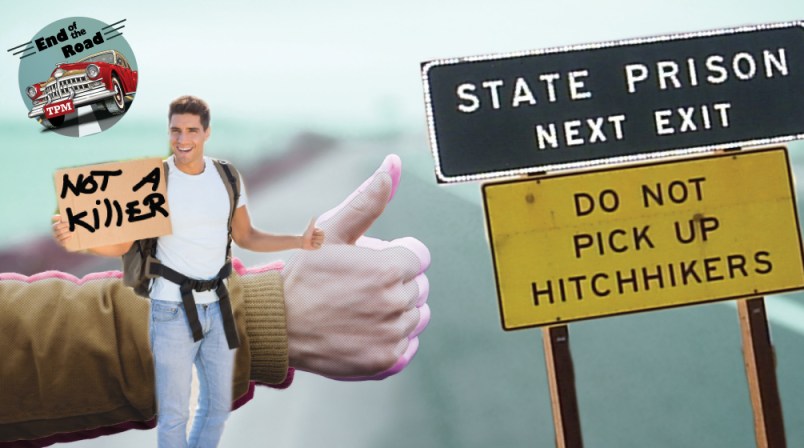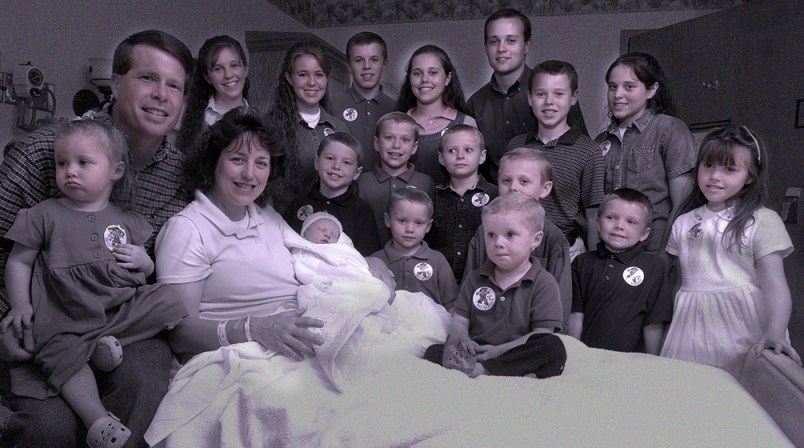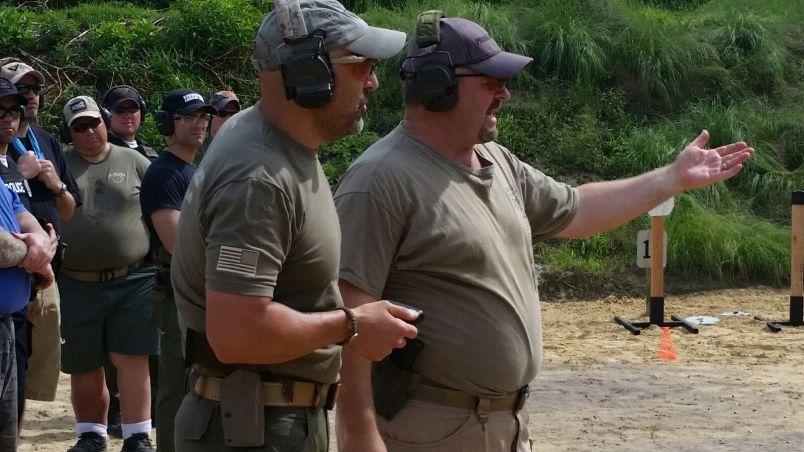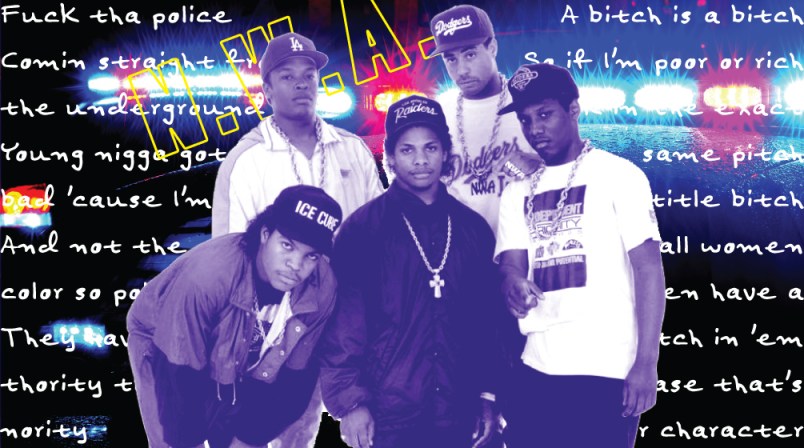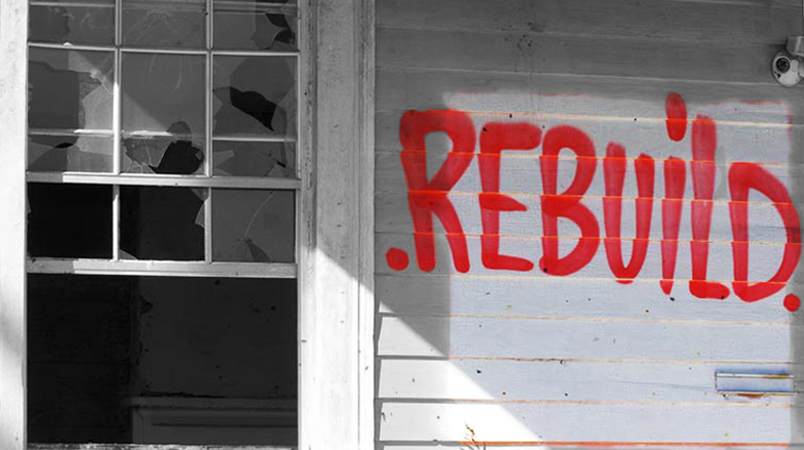This is part three of a four-part series at The Slice called “End of the Road,” about America’s waning love affair with car culture. Read the series intro here and the second installment here, on the hell of being carless in America’s suburban sprawl.
In the early 2000s, a friend of mine was hitchhiking from San Diego to Tempe, Arizona with a buddy. The first thing they figured out as two guys, one of them dark-skinned enough that he got his very first sunburn on that trip, was that sticking your thumb out doesn’t work particularly well. Actually, it didn’t work at all. Two guys might actually be worse than one— “It’s not like your buddy vouches for you,” he told me. So they took to hanging out at big rest stops and gas stations, cornering motorists at the pump, looking them straight in the eye and giving them a little tag-teamed spiel intended to ask for a ride while simultaneously conveying that they were the right combination of fun and totally-not-crazy.
Once, just outside a mountain town in California, they managed to wrangle a ride from a guy in a half-dead Corolla. He was, in my friend’s terminology, “a little on the lam.” He’d just broken up with his wife—and, well, he sort of had a death wish. “He picked us up and was like, ‘Yeah, I figured you’d kill me, and that’s kind of what I want, so.’”
If you talk to people who hitchhike in America today you’ll hear a lot of these jokes about killing or being killed. The specter of danger looms large, so much so that, if my friend’s story is to be believed, picking up a hitcher can be considered a lackadaisical attempt at suicide. Another friend who once thumbed clear across the country with his girlfriend (and who for two years hitched to school every morning in Massachusetts), says nearly everyone who picked him up recalled their own days of hitchhiking glory—right before they reminded him how dangerous the practice had become.
“I just thought that was so bogus,” he says. “How could there possibly be more serial killers now than there were then?” My friend is right to be suspicious; in 2011, the same year he made a few trips from Boston to Portland, Maine in strangers’ cars, the FBI reported that the murder rate had dropped to a point previously unseen since 1968.
Given how few hitchhikers one actually sees on American roadways, it’s surprising any of us even know how to do it, or what it looks like. (As far as I can tell, a lot of first-time teenaged hitchhikers are either instructed by books or movies, rather than by actual sightings of roadside thumbs.) Once a common form of early 20th-century transportation, then the cornerstone of quite a few ‘60s countercultural experiences, it has been all but eradicated from public view in the United States—save for the continued obsession with serial rapists and murders like Robert Rhodes, the “truck stop killer,” and Edmund Kemper, the “co-ed killer,” whose gruesome acts committed against women continue to be the subject of countless books, articles and TV specials.
In many countries, hitchhiking isn’t just accepted but encouraged. Some municipal governments in the Netherlands, for example, install “Liftplaats” signs in desirable hitchhiking locations. And in places like Moscow and many parts of Cuba, where car ownership is less common than in the U.S., sticking your hand out is just as likely to get you a ride in a private vehicle as a taxi.
But here, hitching is outright outlawed in four states, stigmatized and regulated in many others, and plagued by stories of violence and sexual assault. The hitchhiker has been transformed in the public imagination from an unencumbered youth finding adventure across our vast nation to a crazed and dangerous maniac with a homicidal sneer. To pick one up is to meet a death of grotesque proportions—to hitch as a woman, an invitation to be brutally violated.

It wasn’t always this way. There have been few comprehensive histories of hitchhiking, but the thumbs-out, highway-shoulder model is almost certainly an American invention. Twenty years after the first Model T was sold in the United States, the practice of crossing state lines on bummed rides began to coalesce into something with a culture and a name, a custom framed by the romance of a burgeoning car culture and the fresh-faced American values of self-determination and thrift.
“The season proper for ‘hitch-hiking,’” reads a New York Times story from 1927, “now an established mode of travel, ends in September; but stragglers will doubtlessly continue to ‘thumb’ their way from coast to coast and for lesser distances until the unofficial opening of the next regular season in May.” Hitchhiking, according to the jaunty language of theTimes, “appeals strongly to the imaginative young American who wants to see his country as he crosses it and must do his touring cheaply.”
Literature through the ’30s paints a similarly idyllic picture—one New Republic story recommends the young hitchhiker carry cigarettes and always offer to pay for lunch, while in the pages of Popular Science an enterprising gas station owner in Michigan was profiled for building a “waiting room” for hitchers on his property, complete with a hand-painted sign of a crooked thumb. The photograph accompanying the story: three young girls perched daintily next to their suitcases.
Hitchhiking was a romantic narrative hook in 1934’s It Happened One Night and the inspiration for The Little Hitchhiker, a character in Gene Arhen’s popular comic strip, The Squirrel Cage. Even etiquette writer Emily Post, who dictated the boundaries of good taste from her mantle at the upper echelons of New York’s high society, once wrote a column giving women advice on how to hitchhike gracefully as part of the conservation effort during World War II.
Through the war and for some time after, hitchhiking may have become less of a necessity as the automobile industry boomed in the United States and more families owned cars, but its status in the public imagination remained relatively benign, at least until waves of a different sort of restless youth began to take to America’s highways. When the expanding ‘60s counterculture took up hitchhiking, it was largely for its ecological and, yes, aesthetic value—clots of Kerouac wannabes taking to the open road in search of the “real America.”
As Ginger Strand notes in Killer on the Road, her book on the history of violence and the American highway system, press coverage and public sentiment during the ‘60s largely condoned the slightly freakier, self-consciously folksy version of hitchhiking. A 1966 Sports Illustrated article featured a series of fun, punchy stories about thumbing across the country. For a time, relying on the good vibes of strangers seemed like a pretty rad idea.

By the ‘70s, the national tone changed, and conclusions about hitchhiking became far more sinister: Newsweek and Seventeen magazines, among other national periodicals, ran stories about the dangers of riding with strangers. And in one particularly deplorable instance, a 1973 story in Good Housekeeping declared that “female hitchhikers practically invented rape”—the extreme and multi-faceted wrongness of which should probably indicate just how knee-jerk the moment’s hysteria was.

A few dynamics emerged between the ‘60s and ‘70s that transformed the hitchhiker from an adventurer into a victim, but a steep increase in highway violence during that time was probably not one of them. As Strand told me, “no one really did the research to find that out.” A single study, commissioned by the California Highway Patrol in 1974, investigated the relationship between hitchhiking and crime; it found that thumbing a ride was a component in all of 0.63 percent of the state’s crimes.
“When the interstate system was proposed, it was considered a beautiful thing, the American Dream coming to fruition at last,” Strand says. “But it very quickly went dark and became a metaphor.” And as with many enduring cultural metaphors, the notion that hitchhiking would result in near-certain death was largely the result of a series of actions taken by the state to curtail deviant behavior, a campaign further assisted by a handful of high-profile cases wherein bad things happened to very nice white girls.
The FBI’s campaign to end hitchhiking started in the late ‘50s, around the time On The Road was published and a generation of middle-class kids was becoming acquainted with the benzo-popping protagonists who would be hailed as their defining voice. Seeking to “educate” the public about the dangers of hitchhiking, the feds published posters and pamphlets intended to dissuade would-be hitchers and motorists, inferring that even the most clean-cut of strangers could be “Death in Disguise.” And while there aren’t federal laws prohibiting thumbing a ride—save one that bans the practice on national parkland—throughout the ‘60s municipalities and states began to pass or more aggressively enforce laws that criminalized hitchhiking. Today, these laws are most strictly legislated in the Midwest, but most states have stringent limits on where and in what manner it’s appropriate to solicit a ride. Most often, these laws are packaged along with others that criminalize the poor or ill-connected, including openly soliciting employment or spare change.
But public perception of hitchhiking took its most dramatic turn in the ‘70s, when the 1960s narrative of an idealistic youth culture was beginning to dissolve into the more sinister spectacle of cults and serial killers, the latter term having been coined by an FBI agent during the decade. Most relevant to the issue of hitchhiking, however, was the high-profile case of Edmund Kemper, who between 1972 and 1973 kidnapped and dismembered six hitchhikers on the I-35 freeway—all female students, earning him the nickname the “co-ed killer.” Kemper turned himself in and was sentenced to life in prison shortly afterwards, but the legacy of his sadistic acts endured, if the stories inferring hitchhiking women “invented rape” are any indication.
Which isn’t to say that gruesome and terrible things don’t happen to hitchhikers; they do. Just statistically not most often to girls like me, or to my female friends who have hitchhiked across the country with friends, camping in Yosemite and making small talk with Boomers in rickety Volvos. Unfortunately, as Strand tells me, “the sad fact of reality is that women are raped and murdered no matter what they do.” And, as with pretty much all violence in America, brutal acts on the road are most often perpetrated against our most neglected and invisible populations.
Recently, Vanessa Vaselka wrote a petrifying account of hitching as a teenaged runaway in the ‘80s, and of her very-probable run-in with another serial highway killer, Robert Rhodes, a long-haul trucker who kidnapped and tortured young girls in the back of his truck. In it, she cites another initiative by the FBI intended to curtail highway killings, this one made public in 2009. Launched around 2004 to encourage collaboration in solving murders believed to predominantly be perpetrated by truckers across state lines, the Highway Serial Killings Initiative reports a little over 500 killings on American highways in the last thirty years—a number that is likely underreported, given that the vast majority of women killed by truckers in the U.S. are part of transient and undocumented populations, usually teenaged runaways and sex workers.
Not to put too fine a point on that number, or gloss over the grotesque and festering culture that allows alienated long-haul truckers to prey on an enormous and underprotected population, but that comes out to about 0.04 murders a day. Three women are killed by partners or former partners every day in the United States. We have a problem, absolutely, but it isn’t hitchhiking.
I hitchhiked myself a handful of times as a teenager, mostly just bumming the 10 or 15 miles into the tiny, collegiate town of Ashland, Oregon, from where I was staying out near the mesa. It was fine. Once I passed up a Jetta because I didn’t want to ride with a single, older man. A lot of people I know have thumbed at some point, though I’ll be the first to admit that my own network skews towards nice middle-class kids who hated their parents and devoured the drippy, train-hopping romance of certain anarchist zines as teenagers. But despite the proliferation of Internet ride-sharing boards, the dominant icons of hitchhiking, even now, are either completely out of their minds—see Into the Wild and its protagonist’s descent into madness—or homicidal, as in the first few minutes of the seminal Texas Chainsaw Massacre.
A few years ago, a man named Ray Dolin endeavored to hitchhike across the country and write a book, The Kindness of America, based on his experience. When he was allegedly shot in the arm by a motorist off of Highway 2 in Montana just a few days after embarking on the trip, the story made national headlines. The tale was, unfortunately for Dolin, quickly debunked when it became clear he’d actually shot himself in a moment of desperate self-promotion. Dolin’s “random shooting” certainly wasn’t the most expertly executed of hoaxes, but his appeal to confirmation bias landed a random Montana resident in jail and reignited a chain of finger-wagging platitudes about the trustworthiness of strangers.
That Dolin’s story—so obviously thin, not to mention statistically improbable—was not just believed but repeated is a testament to the enduring power of the hitchhiking myth, a story that like many of its kind is born out of the collision of a handful of tangentially related ideas: the development of the interstate system; the paradigm of the serial killer; the unfettered, masculine violence of truck stops; the criminalization of what Strand terms a certain set of ideas about “America’s youth and their rootlessness.” But all good stories need compelling protagonists, which is likely where we get the image of the latter-day hitchhiker: no longer a symbol of merry self-determination but an unmoored, restless and unsanctioned killer.
Molly Osberg is a writer based in New York. She’s on Twitter @molly__o.





